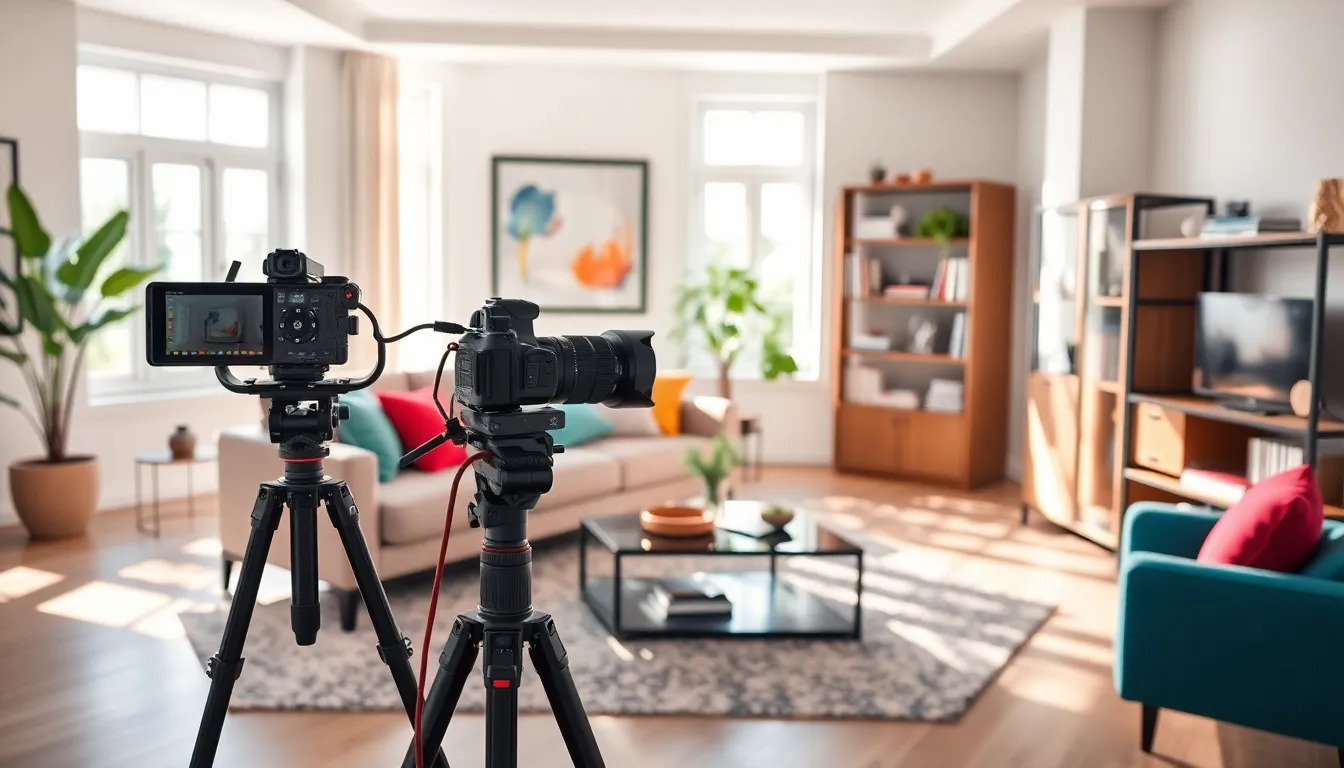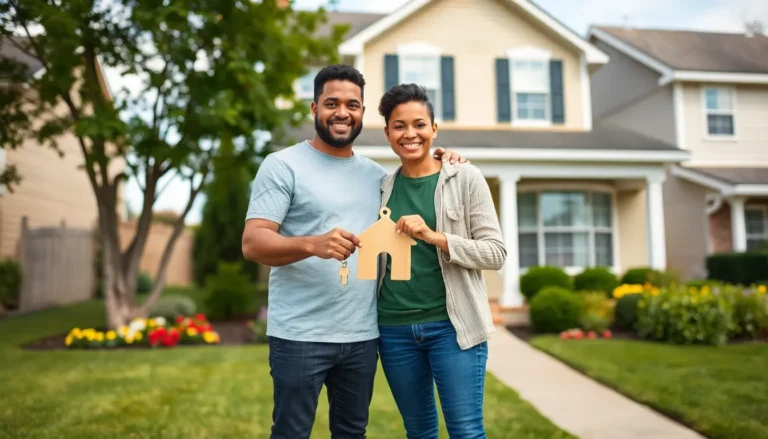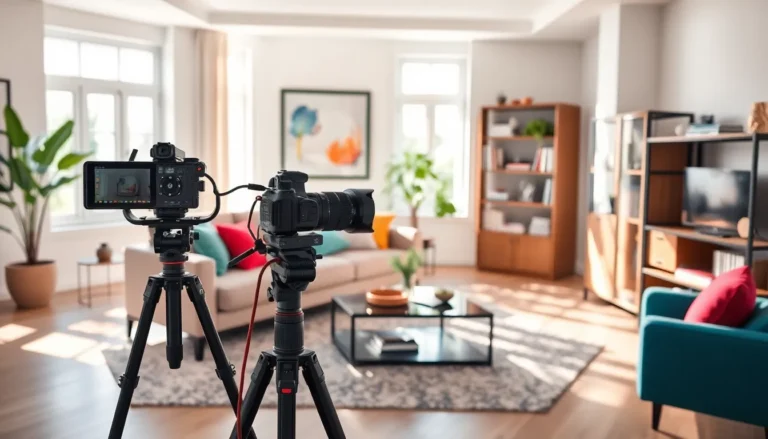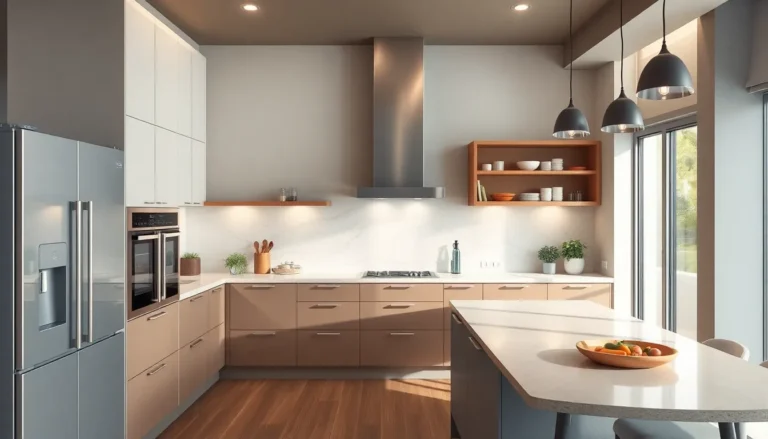In a world where first impressions matter, interior design photography is the secret sauce that transforms ordinary spaces into jaw-dropping visual experiences. It’s not just about snapping a picture; it’s about capturing the essence, the vibe, and that perfect angle that makes a room shout, “Look at me!” Whether it’s a cozy nook or a sprawling living room, the right shot can turn any space into a Pinterest-worthy masterpiece.
Table of Contents
ToggleUnderstanding Interior Design Photography
Interior design photography captures the aesthetic and functionality of spaces. This type of photography emphasizes showcasing design elements that create a strong visual impact.
Definition and Importance
Interior design photography refers to the art of photographing indoor spaces to highlight their design and decor. Its importance lies in its ability to represent a designer’s vision effectively, making it crucial for marketing and portfolio purposes. Effective photography invites potential clients, allowing them to visualize how the design enhances a space. This visual storytelling can significantly influence decisions in real estate and interior design industries.
Key Elements of Interior Design Photography
Lighting plays a vital role in capturing the mood and atmosphere of an interior space. Natural light often enhances colors and textures, creating a warm feel. Composition determines how elements within a scene relate to each other. Strategically placing focal points draws attention to key features. Angles also influence perception; different perspectives can highlight the scale and flow of a room. Additionally, attention to detail, such as decor and furnishings, adds depth and authenticity to each image. Using these elements effectively leads to compelling photography that resonates with viewers.
Techniques for Capturing Stunning Interiors
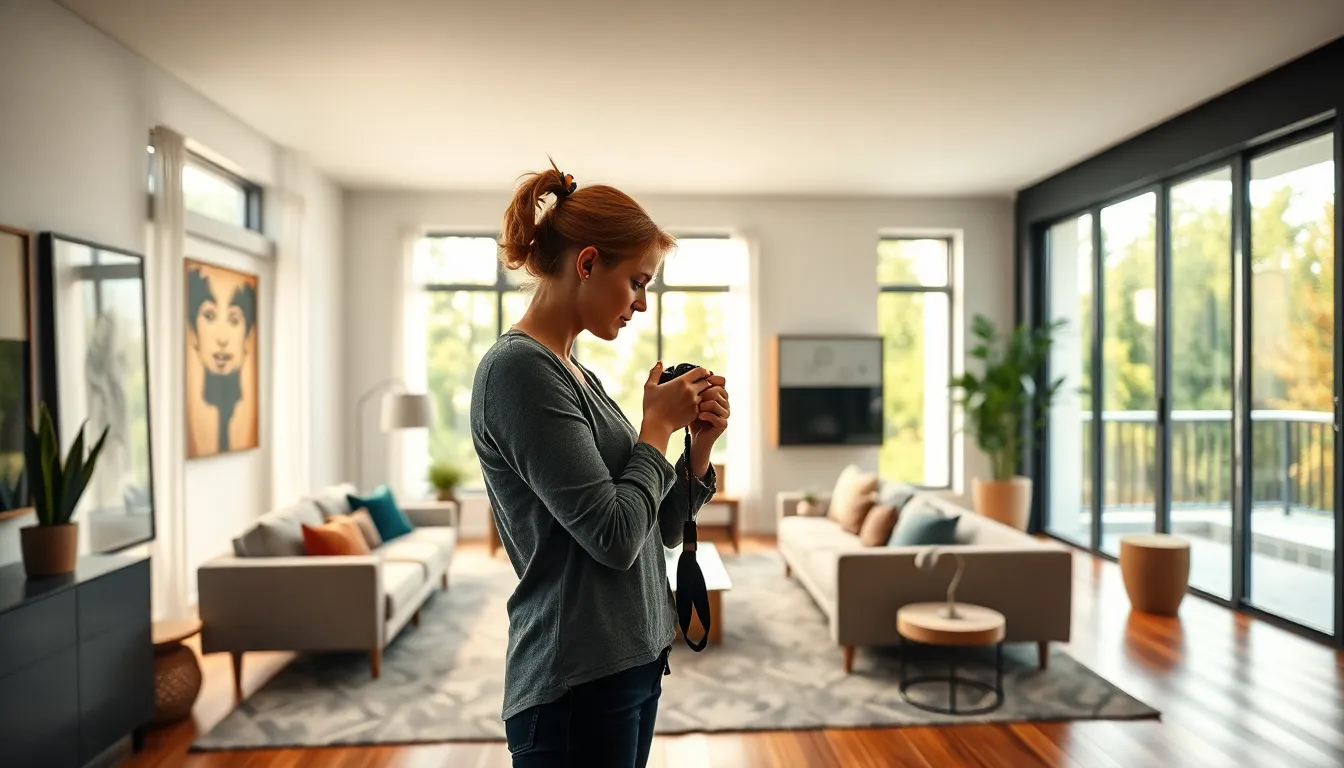
Mastering photography techniques enhances the quality of interior shots. Key aspects, like lighting and composition, play a significant role in creating visually appealing images.
Lighting Techniques
Natural light significantly elevates the aesthetic of space. Use soft, diffused light to minimize harsh shadows. Positioning lights strategically can emphasize textures and colors, revealing the true character of a room. Consider incorporating artificial lighting for more control during low-light situations. Experiment with different light sources to create depth and focus on various design elements. Balance the light levels to ensure that brighter areas don’t overpower the overall image. Tight control of lighting enhances the mood and creates inviting atmospheres.
Composition Tips
Framing shots thoughtfully captures the essence of a room. Start with the rule of thirds by dividing the image into sections for balanced layouts. Leading lines direct the viewer’s gaze and can make spaces appear larger. Angling the camera can showcase unique architectural features and details. Vary perspectives by shooting from higher and lower angles to create visual interest. Keeping lines straight is crucial to avoid distortion. Including decorative elements adds context and depth to the scene, enhancing storytelling within the image.
Equipment You Need for Interior Design Photography
Effective interior design photography requires specific equipment. Having the right tools enhances the ability to capture stunning images that reflect the room’s character and style.
Camera and Lenses
A high-quality camera serves as the backbone of interior design photography. DSLRs and mirrorless cameras provide flexibility and superior image quality. Wide-angle lenses are essential for capturing entire rooms without distortion. Short focal lengths, like 16-35mm, help convey space effectively. Prime lenses deliver sharpness and clarity, making them ideal for detailed shots of specific features. Consider investing in a tripod for stability, especially in low-light conditions. This setup allows for lower shutter speeds, reducing motion blur while keeping images crisp.
Essential Accessories
Tripods play a vital role in ensuring stability and sharpness. A sturdy tripod is necessary for longer exposures and low-light environments. Remote shutter releases prevent camera shake when taking pictures. Additionally, reflectors and diffusers manipulate natural light, enhancing the overall ambiance. Lens cleaning kits keep glass surfaces spotless, ensuring clear images. Finally, memory cards with ample storage are crucial for high-resolution images. Choose cards with fast write speeds to handle burst shooting during sessions.
Post-Processing Tips for Interior Design Photography
Post-processing elevates interior design photography by enhancing visuals and correcting any inconsistencies. Proper editing showcases the designer’s vision through refined images.
Editing Software Options
Numerous software programs cater to interior design photography needs. Adobe Lightroom stands out for its organizational tools and robust editing capabilities. Capture One delivers powerful color grading options and precise adjustments for sophisticated edits. Photoshop offers layered editing for detailed retouching and manipulation, making it a versatile choice. Many photographers use free alternatives like GIMP for essential edits, ensuring everyone can access quality tools.
Common Editing Techniques
Various editing techniques significantly impact the final image quality. Adjusting exposure helps in correcting lighting issues, ensuring details are visible in both highlights and shadows. White balance adjustments improve color accuracy, presenting the space as it truly appears. Cropping enhances composition by focusing on key elements while removing distractions. Applying sharpening techniques can emphasize textures and details, highlighting design features. Additionally, vignetting can draw attention to the center of the frame, creating a more immersive experience for viewers.
Building a Portfolio in Interior Design Photography
Building a strong portfolio showcases a photographer’s capability in interior design. A curated collection of work attracts potential clients and reflects unique skills.
Selecting Your Best Work
Choosing the best images is crucial for an effective portfolio. Focus on versatility by including a variety of spaces, such as kitchens, living rooms, and offices. Highlight different lighting conditions to demonstrate adaptability. Present images that capture the essence of each room, showing emotional engagement with the space. Always keep composition and detail in mind, as they reveal a photographer’s attention to quality. Consistent themes can unify the collection, appealing to a targeted audience.
Showcasing Your Style
Demonstrating a personal style helps create a distinctive brand identity. Use specific techniques that set one apart, such as unique angles and innovative lighting solutions. Integrating a signature editing style can further enhance recognition. Consider including before-and-after shots to illustrate transformations and point out design intent. Balance between creativity and professionalism invites potential clients to engage. Sharing these images on platforms like social media enhances visibility and attract more attention. Building a recognizable style fosters trust and leads to client relationships.
Mastering interior design photography is essential for showcasing the beauty and functionality of spaces. By focusing on key elements like lighting, composition, and the right equipment, photographers can create images that not only attract clients but also tell a compelling story about each room.
Investing time in post-processing and building a strong portfolio can elevate a photographer’s work, making it stand out in a competitive market. With the right techniques and a keen eye for detail, anyone can transform their interior photography into a powerful tool for marketing and design representation.

